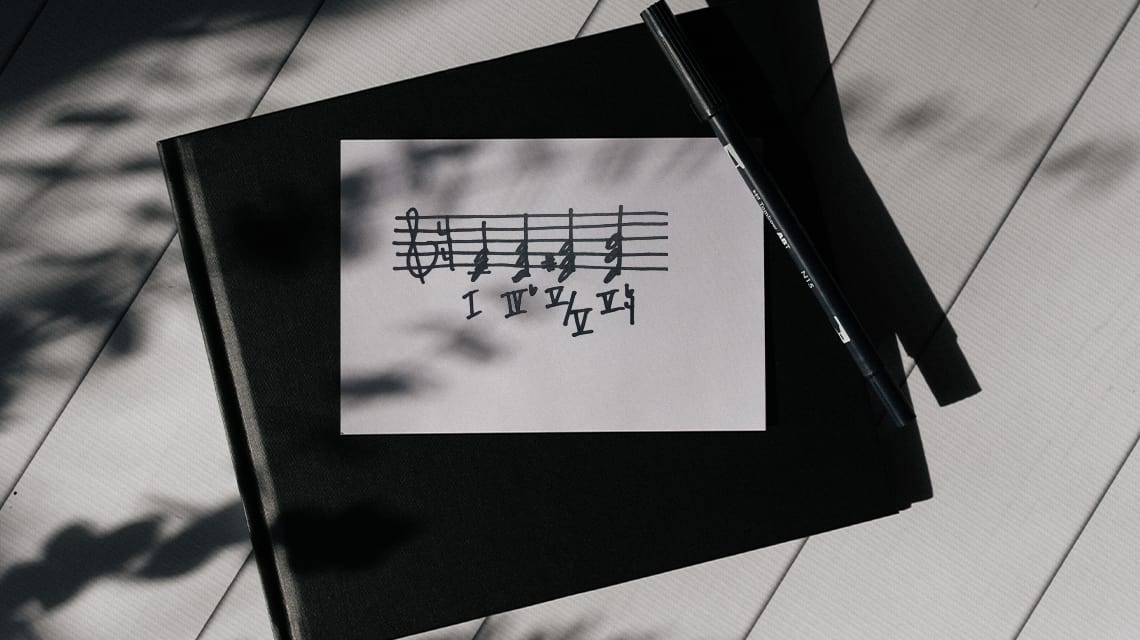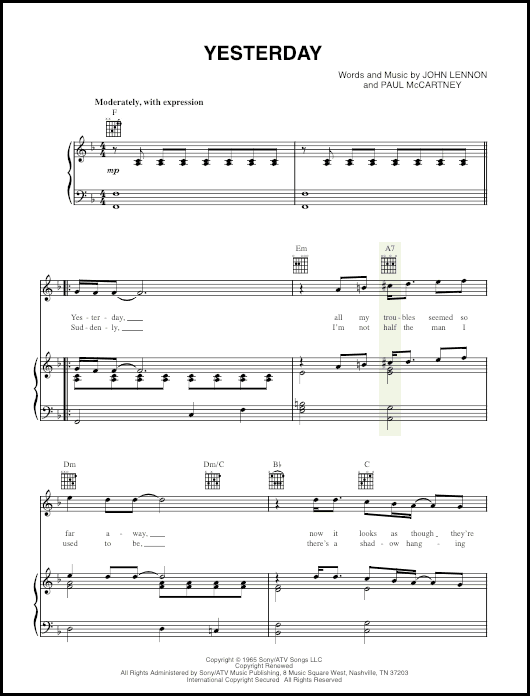An Introductory Guide to Secondary Dominant Chords: Definition and Application
Read our guide on secondary dominant chords detailing theory and applications in your musical journey. Add to your musical toolbelt today.

A secondary dominant is an altered chord having a dominant relationship to a chord in a key other than the tonic. If that sentence was confusing to you, have no fear! We’re about to break down secondary dominants right here and now.
The Origins and History of Secondary Dominant Chords
Secondary dominant chords were not used in music until the Baroque period. Back then, these chords weren't labeled as secondary dominant; instead, they considered these chords outside of the designated key a modulation. Composers explored the possibilities of these chords in the Classical and Romantic periods, and it wasn't until the early 1900s that the term secondary dominant was used. Music composition took different paths in the 20th century, but secondary dominant chords continue to be used in modern popular and jazz music.
Dominant Chords in Music Theory
In music, the “dominant” is the fifth scale degree of the diatonic scale. It is called the dominant because it is next in importance after the first scale degree, the tonic. Likewise, the triad built on the dominant note is called the dominant chord.
This chord is said to have a dominant function, which means that it creates instability and typically leads to the tonic for resolution.
Let’s say we’re in D Major. Looking at the image below, the fifth scale degree (the dominant) is an A. When we build a triad on this scale degree, we can see that the dominant chord is an A Major chord.

The word “dominant” can also apply to seventh chords. A dominant seventh chord is built from a major triad and a minor seventh. Continuing on our example in D Major, let’s observe a dominant A Major seventh chord. If you were labeling this chord on a chord chart, you’d call it “A7” with the note name or “V7” for Roman Numeral analysis.

Now that we have a grasp on dominants, let’s dive into secondary dominants!
Secondary Dominant Chords in Music Theory
Going back to our definition at the beginning of this article, a secondary dominant is an altered chord having a dominant relationship to a chord in a key other than the tonic.
Very rarely do songs end on the dominant chord. The sound of a dominant chord is so strong that it requires resolution. Secondary dominants work in the same way, in that they typically precede a specific chord. Because of that trait, the way to find a secondary dominant is to look at the chord it’s approaching.
Secondary dominants most commonly occur in the approach of the V (dominant) chord in a piece. Staying in D Major, let’s say that we have a I, IV, V, I progression and we want to add a secondary dominant chord before the V (dominant). Follow along with the progression below.

To add the secondary dominant, you must find the dominant of the target chord.
In this case, our target chord is the dominant chord, so we’re going to find the dominant of the dominant. Since our dominant chord is an A Major chord, we need to determine what the dominant chord would be in A Major. We can see from the image below that the fifth scale degree (the dominant) in A Major is E, making an E Major chord our dominant chord in A Major.

We’ve determined that our secondary dominant is E Major. Remember that a secondary dominant chord won’t be a chord in the tonic key. Since we are in D Major, triad built on E would result in a naturally occurring E Minor chord. E Major meets the qualifications of a secondary dominant chord as it requires the added G-Sharp accidental. Follow along with this new chord progression.

As reflected in the Roman Numeral Analysis, secondary dominants are typically written as V/target chord, in this case, V/V. Said aloud, it reads, “five of five.”
We’ve left the chords in root position for clarity, but now let’s add some better voice leading with a few inversions.

You can now see the true impact that secondary dominants have on a chord progression. Like we said earlier, secondary dominants typically occur before the V (dominant) chord, but they don’t have to. Let’s look at an example of a secondary dominant before the iii (mediant) chord.

In C Major this time, our target chord was the iii (E Minor) chord. Thinking in the key of E Minor, the dominant chord would be B Major. Therefore, our secondary dominant, and V/iii chord, is B Major.
Composing with Secondary Dominant Chords
Secondary dominant chords give a song added suspense and complexity. The song becomes more interesting to the listener, and it gives the composer many more chord progression possibilities. To include these chords in your next composition, you need to determine the fifth note of the key that your song is using; for example, the fifth note in the key of C is G, so the dominant chord is the G chord. Next, go up five steps from that dominant chord, which would be D. The D chord is your secondary dominant chord. From here, you can venture into using the chords in the key of G, and when you feel like the song should move on, transition back from G to C using an appropriate cadence.
How to Use Secondary Dominants in Original Chord Progressions
In addition to using secondary dominant chords in the dominant key, you can also use these chords from the fourth scale degree; in the key of C, this would be F. If you need more inspiration, try playing secondary dominant chords on your instrument and see which ones fit well within your piece. It doesn't hurt to gain inspiration from some well-known composers!
Secondary dominants originated in classical music, so it’s no surprise that they’re scattered throughout the pages of Tchaikovsky and Beethoven. But believe it or not, secondary dominants are all over popular music as well! A great example can be found in “Yesterday” by The Beatles.
Right away, we see a secondary dominant preceding a D Minor chord. The dominant chord in D Minor is A Major, the secondary dominant. Remember, A Major is a secondary dominant because it is not a chord found in the tonic key (F Major). Since D Minor is the sixth scale degree in the key of F Major, this secondary dominant chord would be labeled as V/vi.

Other Song Examples Using Secondary Dominants:
- “The Longest Time” - Billy Joel
- “Desperado” - The Eagles
- “Bohemian Rhapsody” - Queen
- “Only You” - The Platters
- “One Headlight” - The Wallflowers
- “Build Me Up Buttercup” - The Foundations
We hope you now feel a little more confident with secondary dominant chords! Though tricky at first, with practice, you’ll begin to identify them faster and faster. In no time at all, you’ll be a secondary dominants expert!
For more music theory tips and lessons, check out more articles here.

